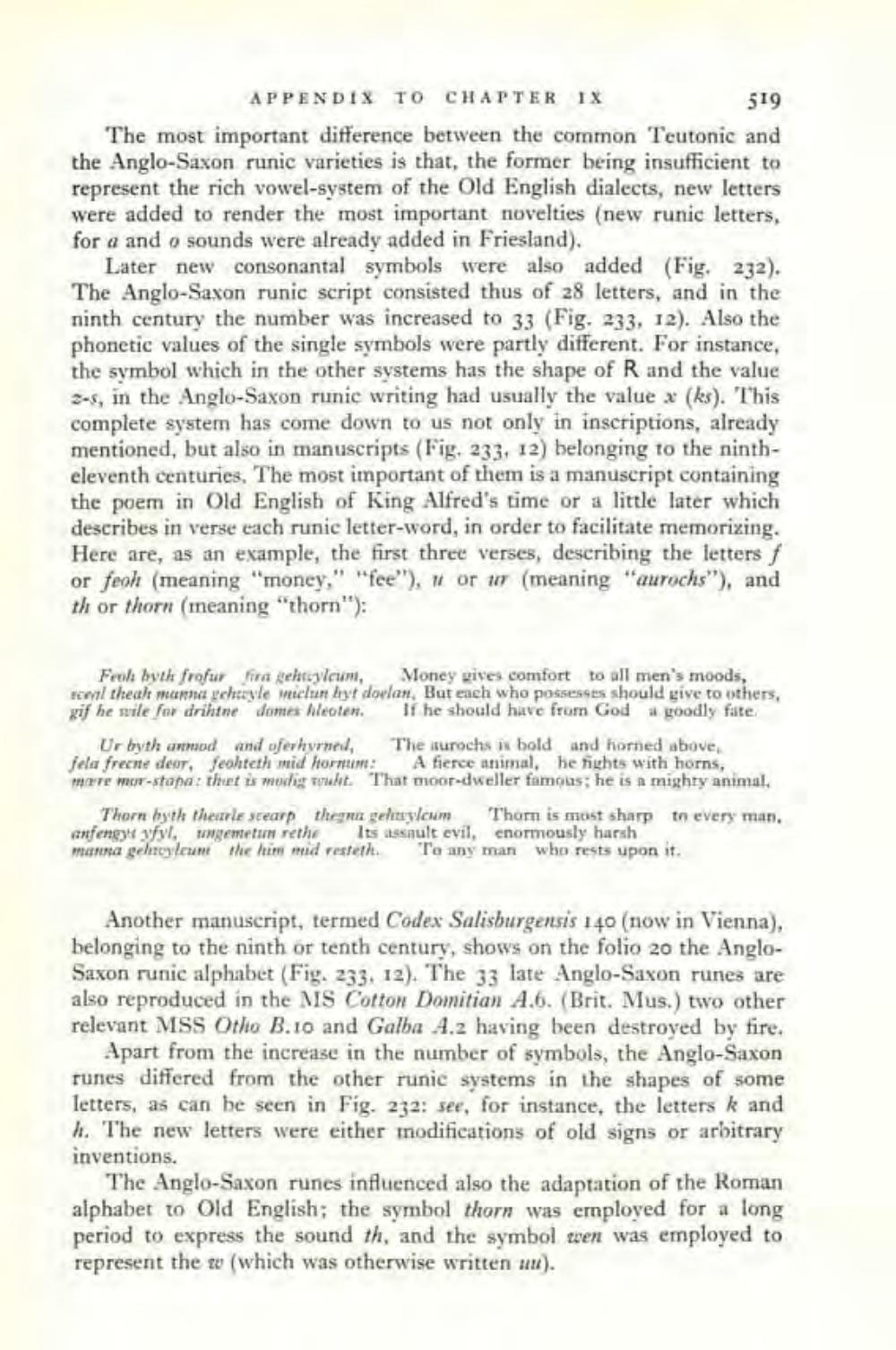________________
APPENDIX TO CHAPTER IX
519 The most important difference between the common Teutonic and the Anglo-Saxon runic varieties is that, the former being insufficient to represent the rich vowel-system of the Old English dialects, new letters were added to render the most important novelties (new runic letters, for a and o sounds were already added in Friesland),
Later new consonantal symbols were also added (Fig. 232). The Anglo-Saxon runic script consisted thus of 28 letters, and in the ninth century the number was increased to 33 (Fig. 233, 12). Also the phonetic values of the single symbols were partly different. For instance, the symbol which in the other systems has the shape of R and the value 2-s, in the Anglo-Saxon runic writing had usually the value x (ks). This complete system has come down to us not only in inscriptions, mentioned, but also in manuscripts (Fig. 233, 12) belonging to the nintheleventh centuries. The most important of them is a manuscript containing the poem in Old English of King Alfred's time or a little later which describes in verse each runic letter-word, in order to facilitate memorizing. Here are, as an example, the first three verses, describing the letters | or feoh (meaning "money," "fee"), w or ur (meaning "aurochs"), and th or thorn (meaning "thorn");
Feoh byth frofurfura gehtylcum, Money gives comfort to all men's moods, Fowl theal man chale Metclum byt dovlean, But each who possesses should give to others, gif he wile for drihtne domes Neolen. If he should have from God goodly fate.
Ur byth anmod and oferhyrned, "The turochs ix bold and horned above, fela frecne deor, feohteth mid Hornum: A fierce animal, he fights with horns,
TE Mor-stapa: thet is modig mout. That moot-dweller famous; he is a mighty animal.
Thorn byth theirle yearpthegna geliyoum Thorn is most sharp tn every man. anfengyu yfyl, tangentetun rethe Its sanult evil, enormously harsh manna gehuleunt the him mid resteth. To any man who rests upon it.
Another manuscript, termed Codex Salisburgensis 140 (now in Vienna), belonging to the ninth or tenth century, shows on the folio 20 the AngloSaxon runic alphabet (Fig. 233. 12). The 33 late Anglo-Saxon runes are also reproduced in the MS Cotton Domitian A.6. (Brit. Mus.) two other relevant MSS Otho B.10 and Galba 4.2 having been destroyed by fire.
Apart from the increase in the number of symbols, the Anglo-Saxon runes differed from the other runic systems in the shapes of some letters, as can be seen in Fig. 232: see, for instance, the letters k and h. The new letters were either modifications of old signs or arbitrary inventions.
The Anglo-Saxon runes influenced also the adaptation of the Roman alphabet to Old English; the symbol thorn was employed for a long period to express the sound th, and the symbol ten was employed to represent the tu (which was otherwise written m).




